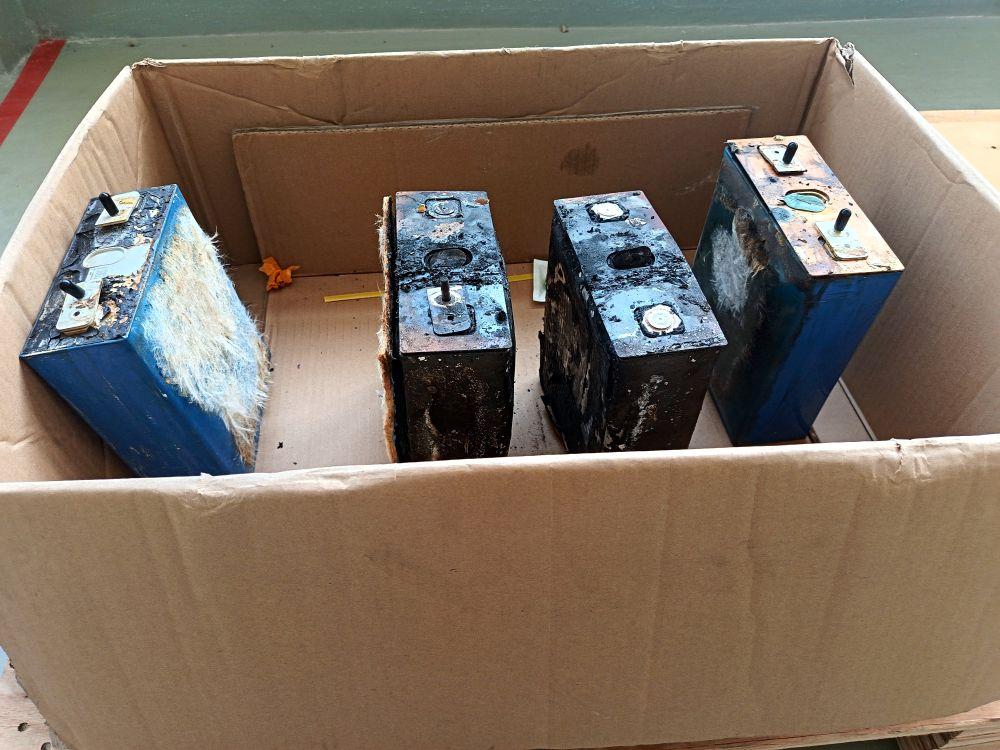
Lithium ion batteries power everything from smartphones and e-bikes to solar energy systems—and they do it well. However, when they fail, the consequences can be serious. This guide outlines seven key warning signs of battery trouble, how to inspect batteries safely, what to do if you detect a problem, and simple preventive measures to help keep both you and your devices protected.
- Physical Changes: Deformation, bulging, cracks, or any sign of leakage from the battery cell or pack are major red flags. Swelling, in particular, indicates a buildup of gas inside—do not ignore it.
- Abnormal Heat: If the battery becomes hot (not just warm) to the touch during use or charging, it could signal an internal short circuit or cell failure.
- Charging Issues: charging takes much longer or finishes unusually quickly; the battery or charger becomes excessively hot during charging.
- Power Drainage Issues: Rapid loss of capacity, sudden shutdowns, or highly inconsistent usage time suggest the battery is deteriorating.
- Unusual Smells: A sharp, chemical, or burning odor coming from the battery often means internal failure—take this seriously.
- Reduced Performance: The battery no longer holds a charge as it used to, even after a full charge, or provides significantly shorter runtime.
- Strange Noises: Popping, hissing, or crackling sounds from the battery—whether during charging, use, or storage—require immediate action.
If you observe any of these signs, stop using the battery immediately and follow the safety steps outlined below.
- Power Off: Before handling, turn off the device and, if possible, remove the battery.
- Visual Check: In a well-lit area, look for swelling, corrosion, punctures, or discoloration.
- Check for Heat: Touch the battery casing briefly—if it’s unusually hot (not just warm), avoid further handling.
- Isolate the Battery: If you need to remove a suspect battery, place it on a non-flammable surface (like concrete or ceramic) away from anything combustible.
- Stop Use Immediately: Disconnect the charger and turn off the device.
- Relocate Safely: Move the battery or device to a well-ventilated, fire-resistant area away from flammable materials.
- Do Not Tamper: Never attempt to open, puncture, or disassemble a swollen or leaking battery—this can escalate the danger.
- Seek Professional Help: Contact the manufacturer, retailer, or a certified repair center for advice. If you bought the battery from an authorized supplier, follow their return or recycling process.
- Dispose Responsibly: Recycle through official battery recycling programs or hazardous waste facilities. Do not dispose of damaged batteries in household trash.
If the battery is smoking or on fire:
Evacuate the area immediately and call emergency services. Only attempt to extinguish the fire with a Class D fire extinguisher or a large quantity of sand—using water may worsen certain types of lithium ion battery fires.
- Purchase certified batteries from reputable brands that comply with recognized safety standards.
- Avoid exposing batteries to extreme temperatures—do not leave them in hot vehicles or freezing conditions.
- Always use the correct charger, and avoid cheap, uncertified alternatives.
- Avoid regularly overcharging or fully draining the battery. For long-term storage, try to keep charge levels between 30% and 50%.
- Perform periodic visual and physical inspections to catch issues early.
Seek help from a qualified technician if the battery is swollen, leaking, emitting unusual odors, or showing electrical faults such as sparking, smoking, or extreme heat. For batteries used in electric vehicles, solar storage systems, or professional equipment, always rely on certified service providers for inspection and replacement—these systems are complex and require expert handling.
Lithium ion batteries offer powerful performance and convenience—but they must be treated with care. Regular inspections, responsible charging habits, and using certified products can significantly reduce risks. If something seems off—whether it looks, smells, or behaves unusually—stop using the battery and seek assistance. When it comes to lithium ion batteries, it’s always better to be safe than sorry.
1. Can I use water to extinguish a lithium ion battery fire?
No. Water can exacerbate certain lithium ion battery fires. Use a Class D fire extinguisher, a large amount of sand, or contact emergency services.
2. How long does a lithium iron phosphate (LFP) battery typically last?
LFP batteries generally endure between 3,000 to 6,000 charge cycles, which can translate to 8–15 years depending on usage and maintenance.
3. What should I do if my battery is swollen?
Stop using it immediately. Place it on a non-flammable surface, do not puncture it, and contact a certified disposal or recycling service.
4. Where can I recycle damaged lithium ion batteries?
Look for local hazardous waste facilities, certified e-waste recyclers, or manufacturer take-back programs. Never place lithium ion batteries in regular trash.
5. Are swollen lithium ion batteries dangerous?
Yes. Swelling indicates internal gas buildup and failure, which increases the risk of fire or explosion. Handle with extreme caution and consult a professional immediately.
Next:BAK Battery Debuts PRO-MAX Series at CIMAMotor 2025, Redefining E-Mobility with Safety & Economy
Previous:EVE Energy's First Sodium-Ion Battery Energy Storage System Successfully Enters Commercial Operation